Among the most impressive places with a mystical aura that I have had the opportunity to visit, I can easily rank Oku-no-in, the Buddhist cemetery of Mount Koya in Japan, at the top.
Koyasan is on the list of all travelers interested in spirituality, culture, and temples, who journey to Japan. Located in the Wakayama Prefecture of Japan, nestled in a lush green mountain in summer and quite isolated in winter, Koyasan is an important center of Shingon Buddhism, also known as “Esoteric Buddhism,” a branch of Japanese Buddhism founded by Kūkai (also known as Kōbō-Daishi).
Therefore, Koyasan houses numerous temples and sanctuaries, including the Kongobu-ji Temple, the mausoleum of Kōbō-Daishi himself, and the famous Oku-no-in cemetery, which is the final resting place of many historically significant figures. This site has left a deep and emotional impression on me due to its otherwordly dreamlike aspect. So, here I will tell you about my very first visit to this awe-inspiring site.
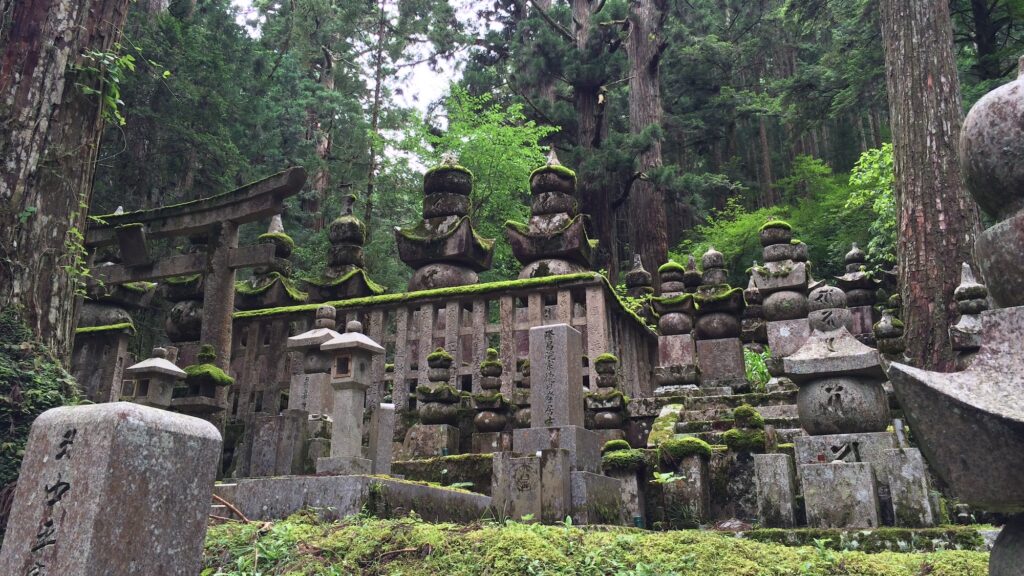
Conquering Mount Koya
It was in 2015, during my very first trip to Japan. Koyasan was high on the list of places to visit. After all, it is the sacred mountain of Japan, housing over a hundred temples within its domain! So, I had to navigate between all my tickets, ensure I didn’t get lost, and maintain my composure amid the chaos caused by the recent typhoon damage at the beginning of the journey. Fortunately, a few hours later, I found myself on the train headed for Koyasan – excited to explore this prominent site of Buddhist spirituality.
The journey to Koyasan is splendid. The train winds its way through the mountains, passing through sunlit villages. After the rain, the weather turned beautiful! Upon reaching Gokurakubashi Station, the train couldn’t go any further. Descending at this station was already a pleasure in itself; the religious atmosphere was palpable with small Buddhist bells hanging everywhere, emitting crystal-clear tinkling sounds.

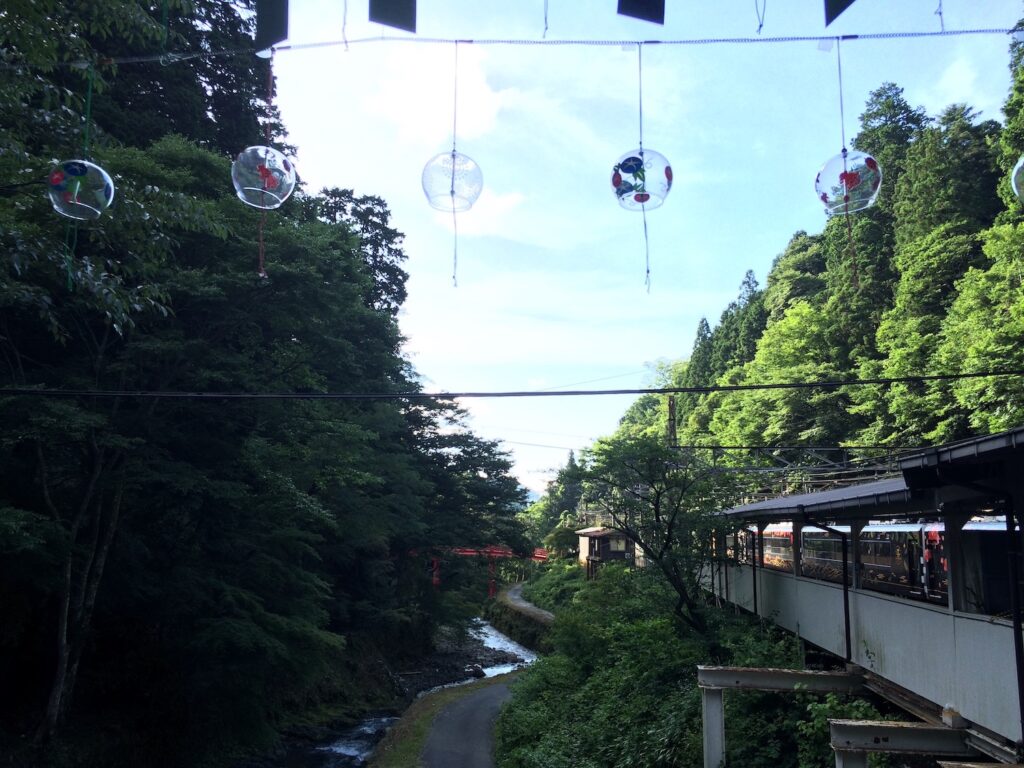
This is also where the picturesque part begins: the funicular ride up to Koyasan is an adventure in itself. This inclined funicular can carry up to a hundred passengers and climbs a steep slope of 637 meters in just 5 minutes. It is one of the world’s few funiculars that can reach such a speed, and it’s particularly impressive to see it pass by its counterpart, which descends the slope. Once at the top, a bus takes travelers to the Koyasan site itself, along a narrow winding mountain road.
Night in a Ryokan and Meditation in Koyasan
That evening, I stayed at the Buddhist temple Houon-in, which offers traditional Japanese accommodations called ryokan. Many other temples in Koyasan also offer similar accommodations. Upon arrival, I was truly amazed; it promised to be a unique experience! The corridors were incredibly quiet, and the rooms seemed separated by simple paper partitions that could tear with the slightest breath. Yet, there was no breeze… I must admit, I had high expectations for this experience as it was supposed to be one of the highlights of my journey!
Booking a room in the temple also included a vegetarian dinner and breakfast, as well as the opportunity to participate in the morning prayer with the monks. After a somewhat restless night filled with nightmares (perhaps I was unsettled by all the spirituality surrounding me), I was ready by 5:30 am for the morning prayer, filled with hope for the day ahead. When I joined the prayer hall, the monks chanted sutras in a monotone and melodic manner, as you might imagine if you’ve ever heard monks reciting.
We were then given the opportunity to participate in a meditation session led by one of the monks, in English, which was quite rare at the time! We learned a meditation method based on Esoteric Buddhism, which involves three stages: stabilizing the body, stabilizing the breath, and stabilizing the mind. However, the last stage proved to be quite difficult to achieve, so we focused on the first two. The breath control was particularly challenging for me, as was maintaining a straight back and focused stillness for more than fifteen minutes. In the end, we meditated for 22 minutes, and although it was difficult, I must admit that the experience was very calming. It may have been one of the most rewarding meditation sessions during my travels.
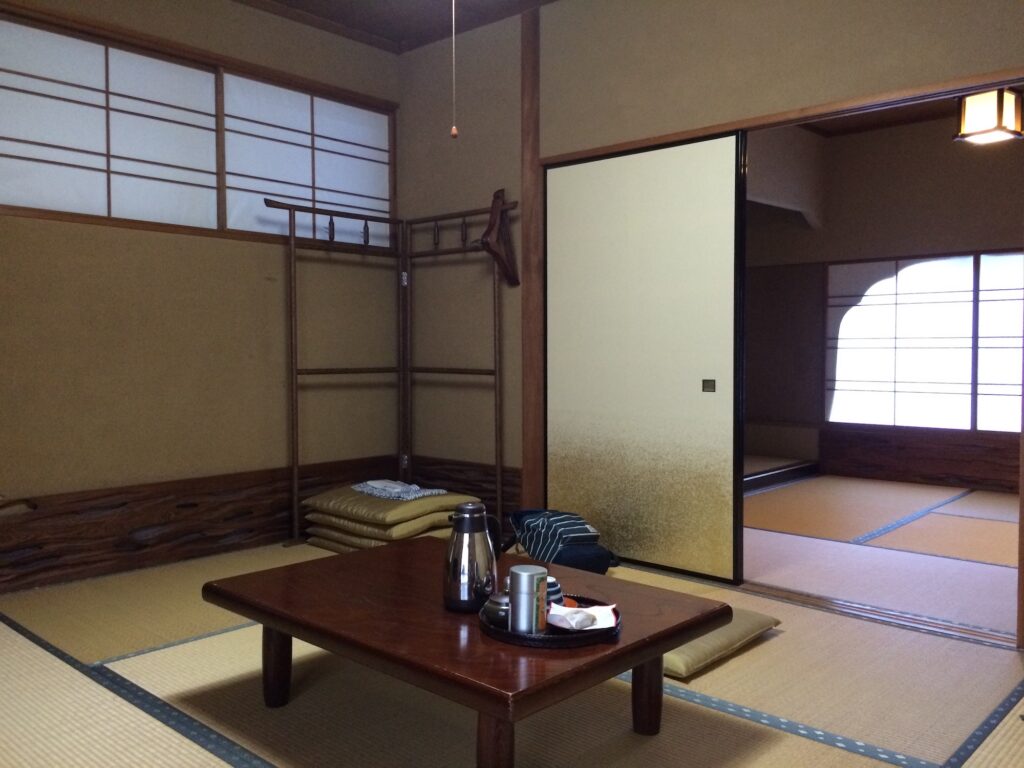


Legendary Oku-no-in
But let’s get to the main point: I promised to tell you about Koyasan’s Oku-no-in, and here it is! The Buddhist cemetery extends over an unknown area, shadowed by the towering cedars of Mount Koya. Exploring all its nooks and crannies would take hours and hours. It is a strange place, where intertwining graves are covered with moss and vines, stretching as far as the eye can see. The sight is more than surreal. I am captivated by this atmosphere.
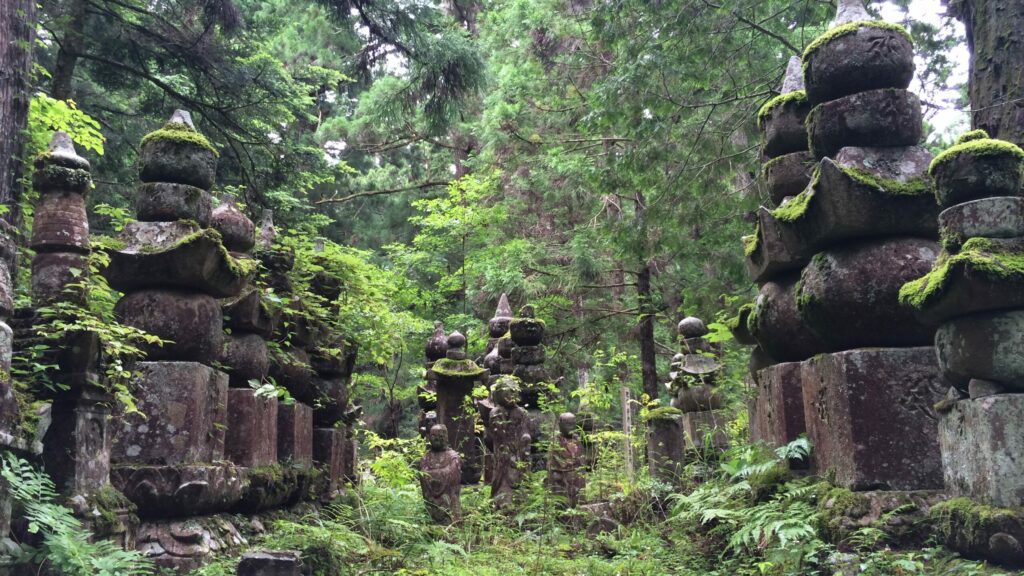
This cemetery is the final resting place of Buddhist monks and nuns, while statues of Buddhas in all sizes and shapes watch over them, scattered throughout the forest. These Buddhas remind me of the mysterious Jizo statues at Kanmangafuchi in Nikko. I feel like I am wandering like a ghost, unsure if it is the place that is ghostly or the people who traverse it. It’s unclear whether I am in the realm of the living or that of the dead.
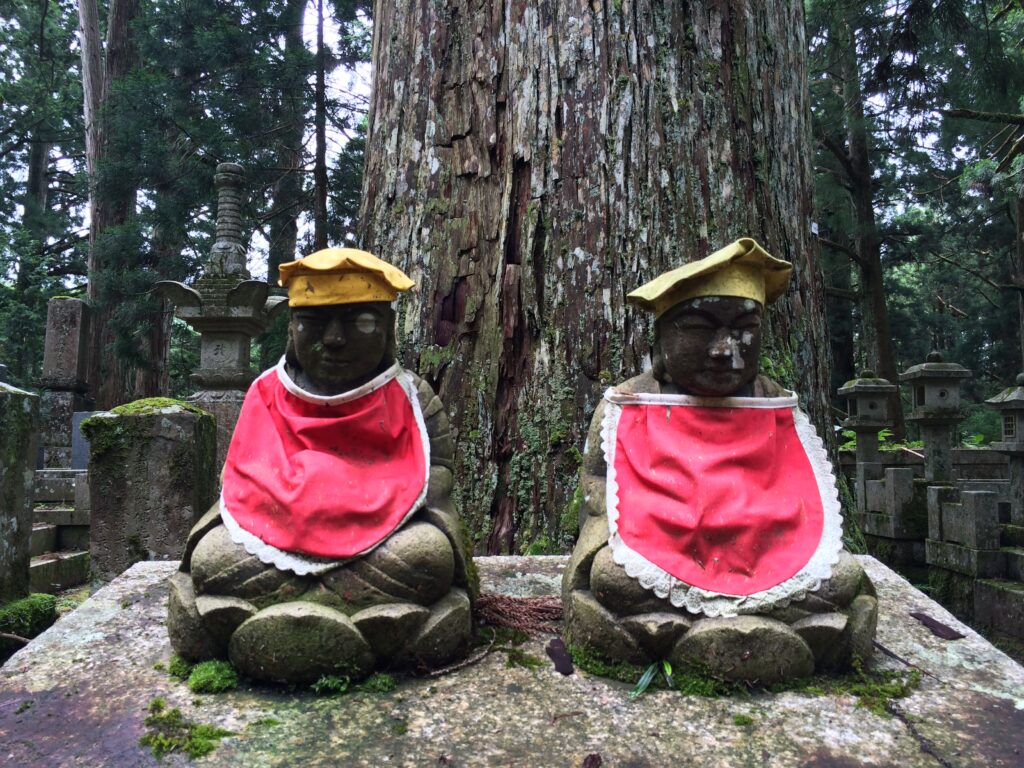

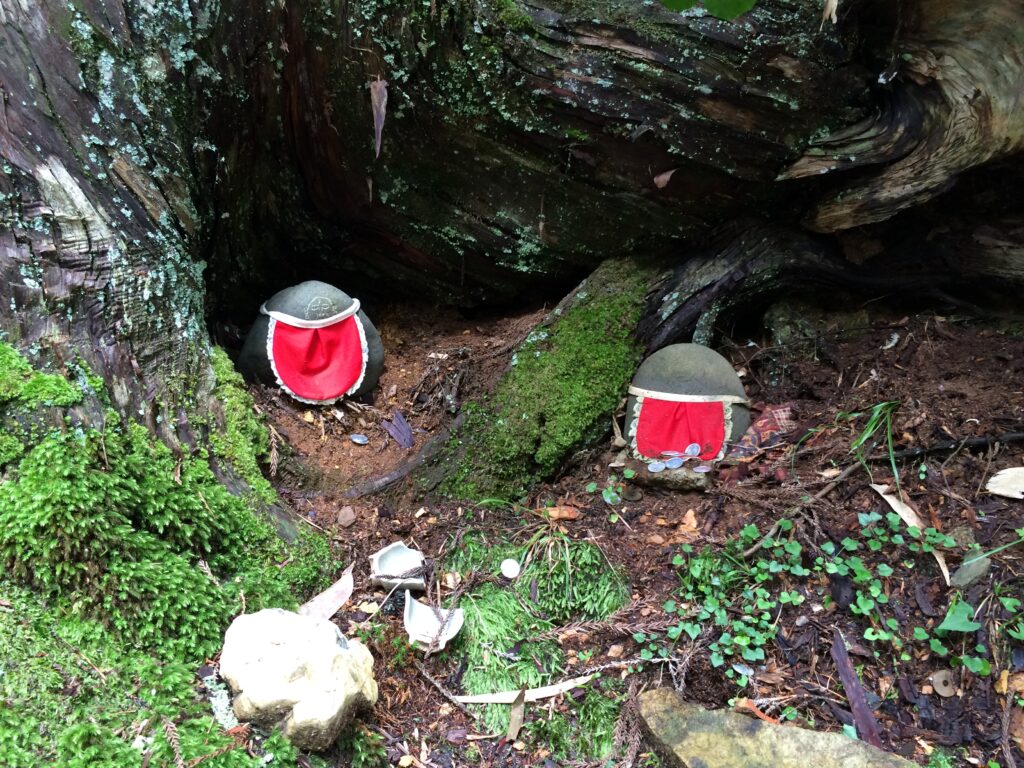
As you can imagine, such a place is full of legends. With the small group of travelers accompanying me, I spent more than two hours exploring the area: from the mausoleum of Kobo Daishi, which legend says continues to pray for us until the end of time, to the somewhat peculiar and eerie graves. For instance, there is the tomb of a nun where, they say, you can hear the cries of hell if you put your ear to it (I admit I didn’t try; that wasn’t a sound I was particularly eager to hear). But there are also less ominous places, like a giant stone that one must try to lift. According to legends, it feels light for kind-hearted people while appearing much heavier to others… I saw some people unable to lift it at all, but I won’t tell you if I succeeded or not!
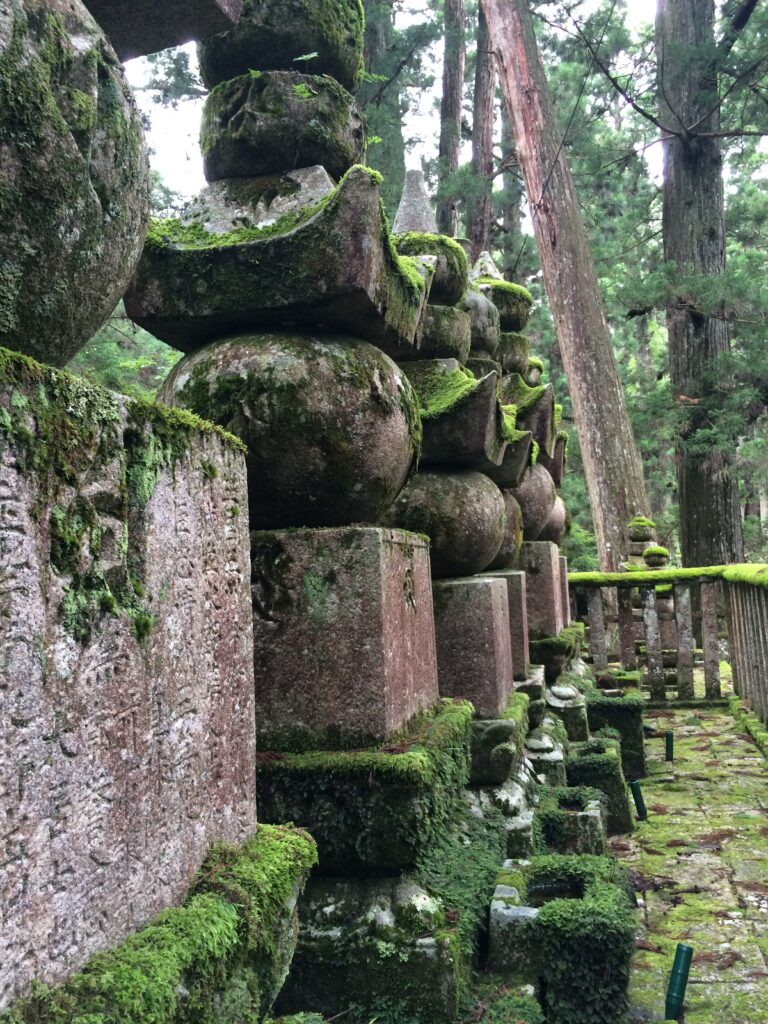
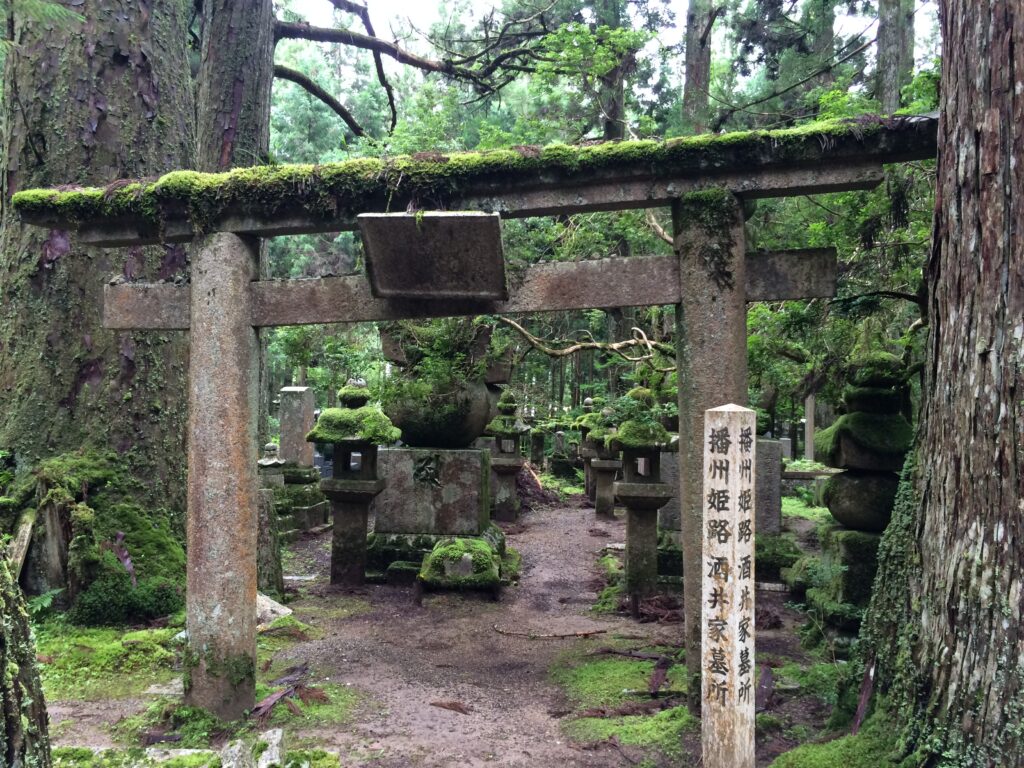
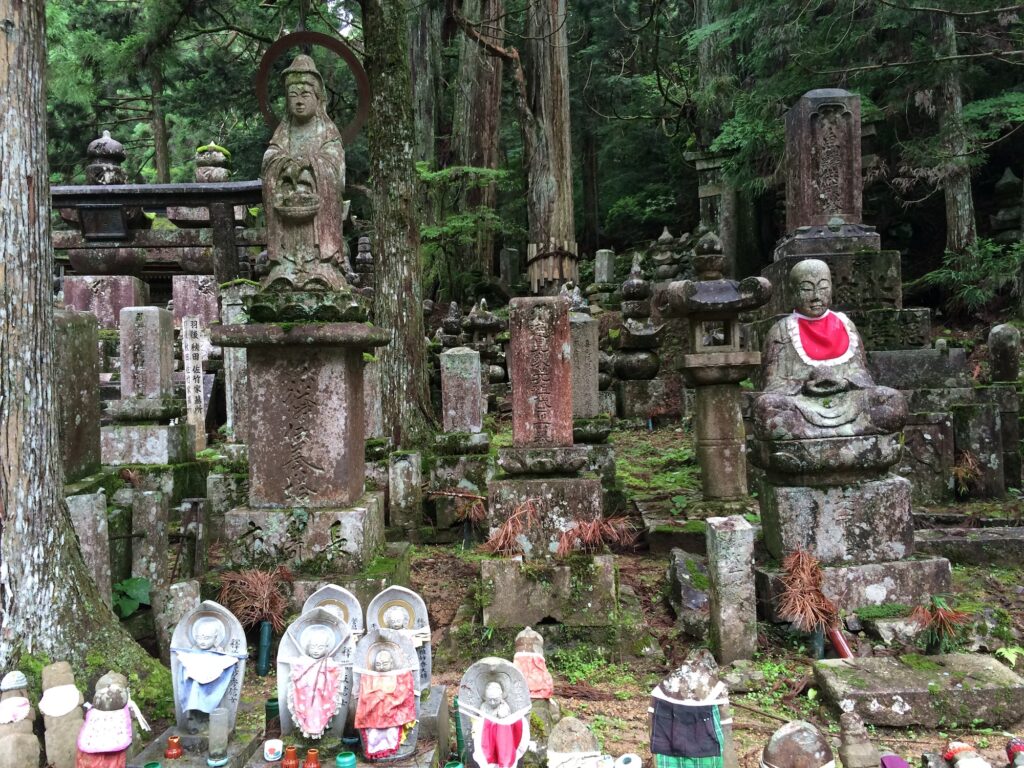
This journey to Koyasan and the discovery of this legendary cemetery lasted twenty-four hours. Twenty-four hours during which I felt like I was traveling in an entirely different world. Twenty-four hours where I seemed to straddle the line between the realm of the living and the realm of spirits. It was after this journey and the experiences that seemed to be at the threshold of the two realms that I decided to get a tattoo of a torii, the symbolic gate marking the passage between the two worlds. But that is another story.

Koyasan and Oku-no-in: practical information
How to get to Koyasan?
There are two possibilities: with or without a JR Pass, depending on your departure station. I won’t discuss all the options here, but to get there, you need to reach Gokurakubashi Station to take the Koyasan Funicular. This final part is the only way.
When to visit Koyasan?
I have been to Koyasan twice, once at the height of summer and once at the end of winter. It was very cold the second time, but it didn’t stop us from visiting temples and the cemetery. However, I would advise you to choose a milder season, especially if you plan to experience a ryokan, as the heating might not be very high.
Getting around in Koyasan?
Once you arrive in Koyasan, all transportation is easily done on foot. Staying in a temple in Koyasan (shukubo) You can now find ryokan-style accommodations on sites like booking.com, but alternatively, you can inquire on the official Koyasan website. Traditional lodging within a temple is called shukubo.
Points of interest:
– Oku-no-in Buddhist Cemetery
– Kongobu-ji Temple and its stone garden
– Mie-do Temple
– Danjo Garan Temple
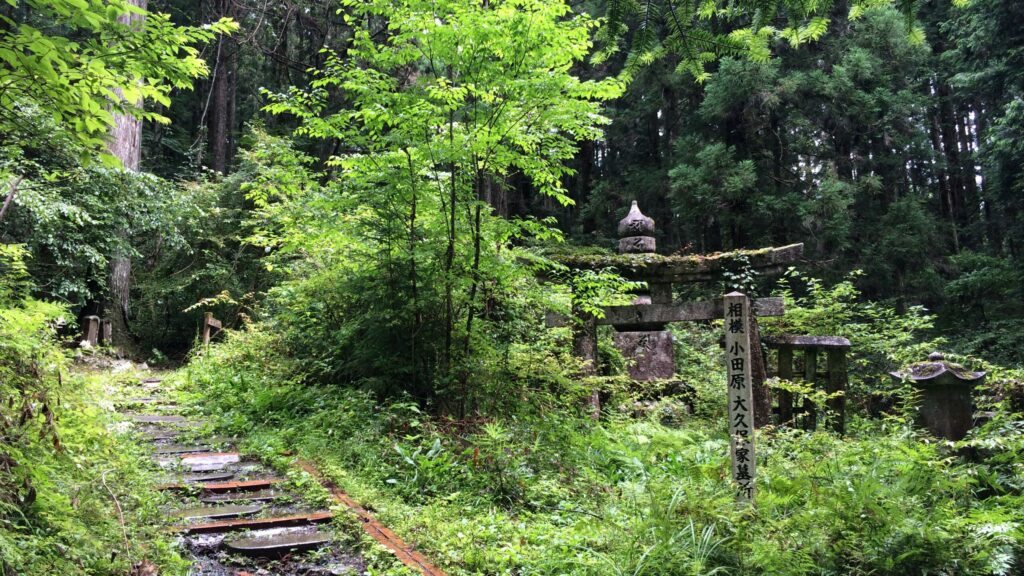

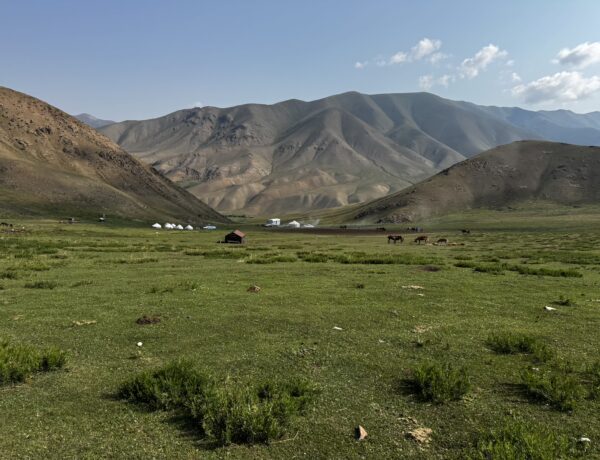

No Comments